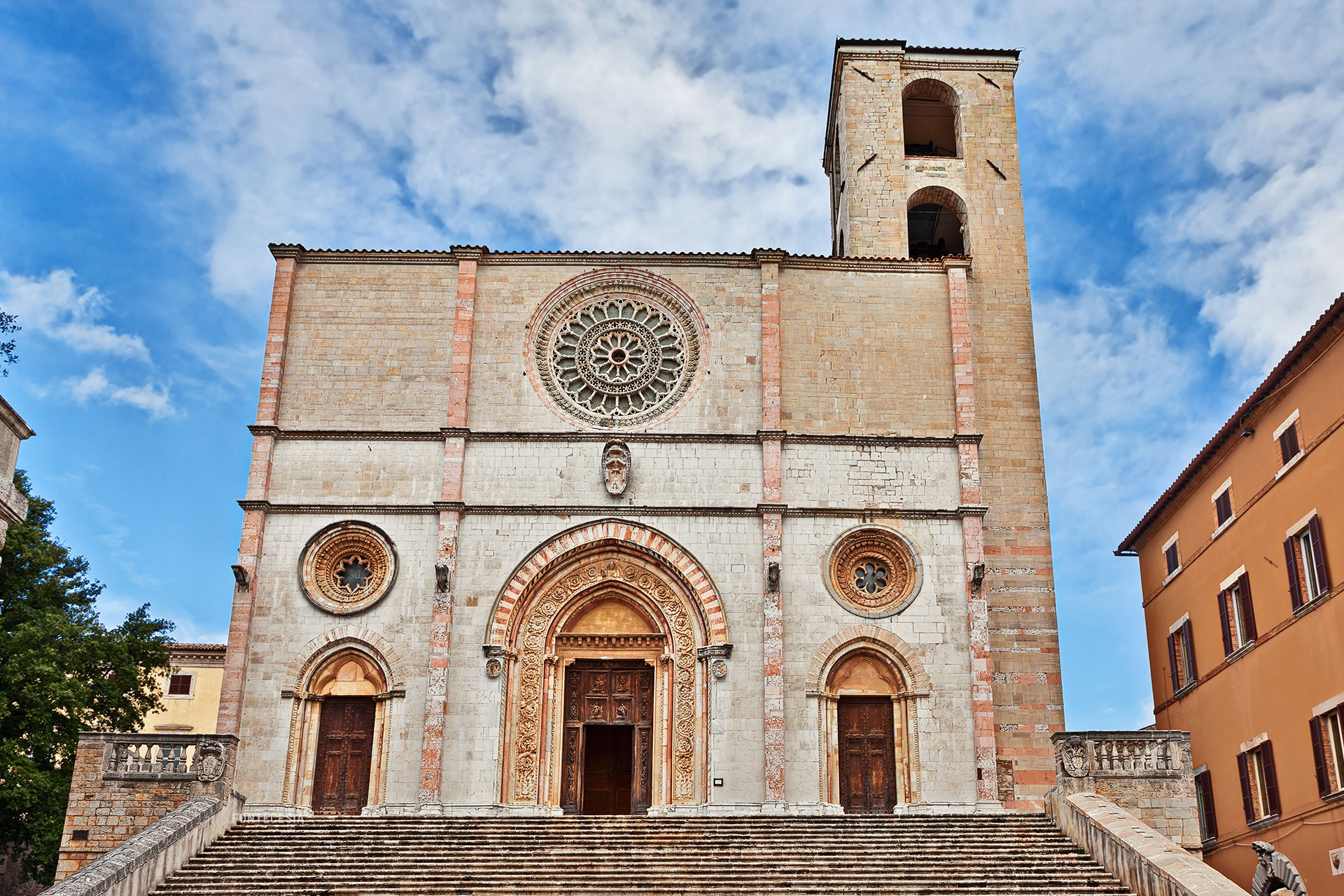The co-cathedral of the diocese of Orvieto-Todi, the Cathedral of Todi, located in the central Piazza del Popolo, is dedicated to Mary Most Holy Annunziata and was built between the 12th and 14th centuries. It represents a fundamental point of interest for its historical, architectural, and artistic value. It is famous in particular for its façade, frescoes, and sacred art that it houses, but what makes this monument unique are also some details that few people emphasize but that can intrigue adults and children alike, giving a touch of mystery: these are the monstrous figures carved in some points of the church’s external walls.
The Cathedral of Todi
The unmistakable and beautiful façade of the Co-Cathedral of Todi has been modified several times in the past and is particularly embellished by the central rose window, dating back to the 16th century, but whose glass was replaced in the 19th century, during the restoration works that involved the entire building. The large and suggestive external staircase is composed of 29 steps, at the top of which you can enjoy a privileged view of Piazza del Popolo. The interior is divided into four naves, of which the central one is wider and higher. Of great interest is the Cesi Chapel, with the frescoes by Ferraù da Faenza, also known as the Faenzone, who is also the author of the impressive and beautiful fresco on the counter-façade depicting the Universal Judgment. On the right side of the altar, it is possible to access the crypt that houses a precious collection of sacred art.
External walls and monstrous figures of the Cathedral of Todi
If the front façade is certainly the most well-known and admired of the Cathedral of Todi, it is worth taking a walk to discover, between Via del Duomo and Via del Vescovado, also the lateral and posterior ones that host the magnificent crypt. And it is precisely during this small exploration of the church’s exteriors that we can discover some mysterious figures.
The external walls are in fact characterized by the presence of decorations and figures in relief. Among small arches and columns, it is also possible to distinguish sculptures depicting monstrous creatures, masks, and mysterious animals. Even the central portal, on the main façade, is framed by carved decorative bands: the main one depicts acanthus scrolls from which mysterious faces and human and animal figures emerge; at the central peak, the figure of the blessing Christ.











Follow us on the socials